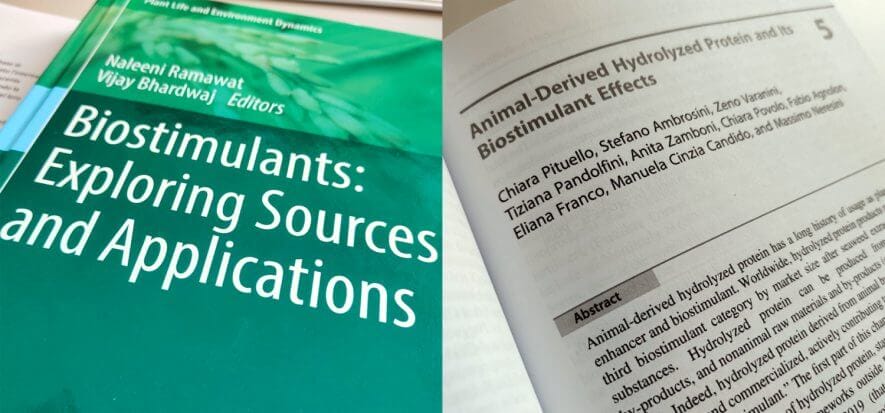First: “Biostimulants” are materials of natural origin. Second: “Biostimulants are a potentially novel approach regulating physiological processes in plants”. However, there is one problem: “It is known that the biological functions of the plant can be positively moderated through the application of these biological materials, or their mixtures. But an explicit mode of action has not been defined”.
Hence the need for an educational text such as the one from which the above quotations are taken. It is entitled Biostimulants: Exploring Sources and Applications and it is published by Springer. It contains an in-depth presentation by SICIT, a Vicenza-based company specialising in the recovery of tanning residues and their transformation into biostimulants for agriculture (and retardants for the gypsum industry).
The SICIT intervention
SICIT proposes a talk entitled Animal-Derived Hydrolyzed Protein and Its Biostimulant Effects. “Worldwide- the Vicenza-based company writes-, hydrolyzed protein products represent the third biostimulant category by market size after seaweed extracts and humic substance. Hydrolyzed protein can be produced from either animal by-products, and nonanimal raw materials and by-products (e.g., plants, bacteria, fungi). Indeed, hydrolyzed protein derived from animal by-products was the first discovered and commercialized, actively contributing to the birth of the term and concept of “biostimulant”).
The chapter signed by SICIT presents “a general excursus on the main analytical methods used for its characterization, will be included” and then moved on to ‘, an overview of the state-of-the-art of scientific knowledge on the action mechanisms of these products, focusing mainly on chemical and enzymatic hydrolysis’.
In the end
Biostimulants: Exploring Sources and Applications summarises and offers an in-depth introduction to biostimulants. It details their ‘categories, modes of action, sources and application strategies, and effects’. Nothing could be more useful in a world where one of the most topical green words is ‘circularity’. In other words, one of the critical factors of the tanning industrial dimension.
Read also:











